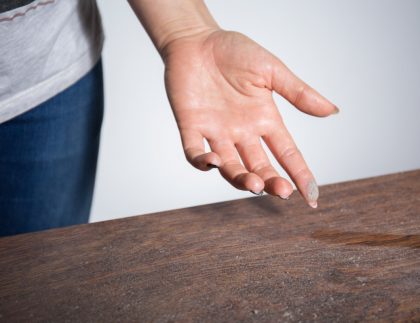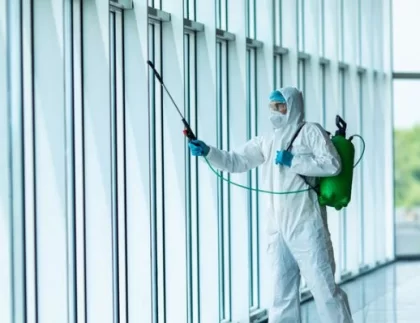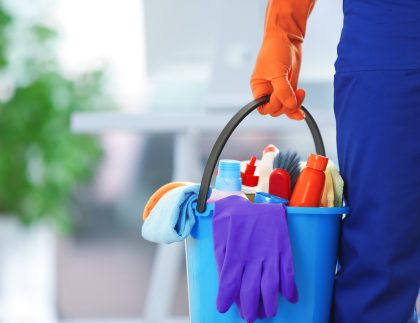
Infection Control In Aged Care – What You Must Do In Terms Of Cleaning?
Daily cleaning and routine deep cleaning are the keys to infection control in aged care facilities. The elderly population in such facilities is particularly vulnerable to infections.
When an infection occurs, it spreads fast and affects others in the facility. It can have devastating consequences that may even lead to fatalities!
A highly effective method to reduce the risk of infection is thorough cleaning practices. When it comes to aged care cleaning, the focus should be on infection control.
Understanding Infection Control In Aged Care Centre
Wondering how to control infection in aged care? First, let us quickly go over what it means.
Infection control involves a set of procedures. Every step in the procedure is designed to prevent the spread of infection. The procedure is specially designed for healthcare settings.
In aged care facilities, an infection can spread through various routes including:
- Direct contact
- Contaminated surfaces
- Airborne particles
Without appropriate measures, a single infection can quickly escalate into an outbreak. Moreover, poor cleaning practices can worsen the situation.
On the other hand, you can effectively stop the spread in two ways. First, you need to thoroughly clean. Second, you need to disinfect.
Let us find out what role cleaning plays in infection control in aged care.
Infection Control Procedures In Aged Care – Specialized Cleaning Methods
Want to effectively prevent the spread of infection in aged care facilities? You need to go beyond standard cleaning. You need an aged care cleaning checklist that has a special focus on infection control.
Such a checklist would include cleaning methods that target specific zones and surfaces. Let us explore a few specialized cleaning methods that are essential for infection control in aged care.
1. Cleaning After An Outbreak
Has there been an infection outbreak in your facility recently? The only way to protect residents and staff is through swift and thorough cleaning.
The initial step is to isolate the areas that have been affected. That will minimize cross-contamination. You should also consider all items and surfaces within the affected zones contaminated.
Immediate Steps To Take
- Close off the areas.
- Limit access until the area has been completely cleaned and disinfected.
- Make sure the cleaning staff wears appropriate protective gear during cleaning.
- Use EPA-registered disinfectants.
Surface Cleaning Protocols For Affected Areas
- Clean and disinfect all surfaces.
- Focus on high-touch areas like bed rails and medical equipment.
- Clean with detergent first to remove organic matter.
- Then, thoroughly disinfect surfaces and objects.
Cleaning Furniture Upholstery
- Start by vacuuming furniture upholstery.
- Remove dirt and other surface-level debris.
- Use a vacuum with a HEPA filter.
- Use appropriate cleaners to remove stains.
- Make sure the cleaner is safe for the fabric. Steam clean the upholstery.
- Disinfect furniture and upholstery.
2. Floor And Carpet Cleaning
Floor and carpet cleaning are crucial aspects of infection control procedures in aged care facilities. That’s because carpets and flooring can get contaminated easily.
Daily cleaning is necessary to maintain a hygienic environment. On top of that, periodic deep cleaning is also required.
- Start by sweeping the floors.
- Use a HEPA filter for the vacuum cleaner.
- Mop hard floors using detergent and disinfectant.
- Deep cleaning carpets.
- Thoroughly dry the floors to prevent mould.
3. Kitchen And Dining Area Cleaning
When it comes to infection control, the kitchen and dining area are critical zones. Food is prepared and served here. That’s why the risk of cross-contamination is high. Comprehensive cleaning is the only way to prevent foodborne infections.
- Thoroughly clean all surfaces that touch food.
- Frequently clean utensils with detergent.
- Sanitize countertops and cutting boards.
- Use food-safe disinfectants.
- Wipe down serving areas after every meal service.
- Clean and sanitize floors and walls.
- Regularly clean appliances.
- Perform routine deep cleaning.
When it comes to infection control in aged care facilities, these specialized cleaning methods are mandatory. Hiring aged care cleaning services is the best way to keep facilities infection-free.
Key Cleaning Practices For Infection Control In Aged Care Centre
The specialized cleaning methods aren’t the only ways of infection control. There are many strategic cleaning activities involved in it too. These are key cleaning practices that need to be implemented consistently.
When applied correctly, these act as the first line of defense against germs. Let us take a look at what these activities are and how to practice them.
Daily Cleaning Routine
A structured daily cleaning routine is crucial to minimizing the risk of infection. You need to stay consistent. Here’s what you should do:
- Clean and sanitize high-touch surfaces daily.
- Clean and disinfect patient rooms every day.
- Regularly clean communal spaces.
Deep Cleaning Procedures
Daily cleaning cannot reach every nook and cranny. For that, you need to deep clean the facility. Here, the focus is to get rid of debris and germs that may have accumulated over time.
It’s best to hire commercial cleaning services for deep cleaning. They have the right knowledge and equipment to perform the same. They will also recommend the best frequency after assessing your facility’s deep cleaning needs.
You must deep clean the kitchen, dining room, restrooms, and communal spaces. Make sure to:
- Clean and sanitize all surfaces.
- Take apart appliances and clean them thoroughly.
- Pay special attention to hard-to-reach areas.
- Scrub and clean bathroom tiles.
- Clean and disinfect toilets and sinks.
- Deep cleaning of furniture in communal spaces.
- Clean and sanitize surfaces and objects.
Proper Disposal Of Waste
Proper management of waste is essential for controlling the spread of infections. Waste materials spread the highest amount of germs. That’s why you need to handle them correctly. To safely handle potentially infectious waste, you must:
- Segregate different types of waste.
- Use biohazard containers for biohazardous waste.
- Wear proper PPE when handling waste.
- Avoid direct contact with contaminated materials.
Proper disposal of waste is equally important. When disposing of waste, adhere to the following guidelines:
- General waste: Use regular bins for non-hazardous waste. Make sure to empty the bins regularly.
- Biohazardous waste: Use designated bins for this type of waste. Use PPE when handling. Make sure to dispose of such waste as per local regulations.
By adhering to these key practices, you can significantly reduce the risk of infection in your aged care facility.
How To Prevent Infection Control In Aged Care?
There have to be strict protocols in place for infection control in all healthcare facilities. However, without a reliable team of cleaners, achieving that becomes nearly impossible. That’s why you need a competent commercial cleaner like The Cleanables at your side.
Our team is specially trained in medical cleaning. They have specialized expertise in infection control










